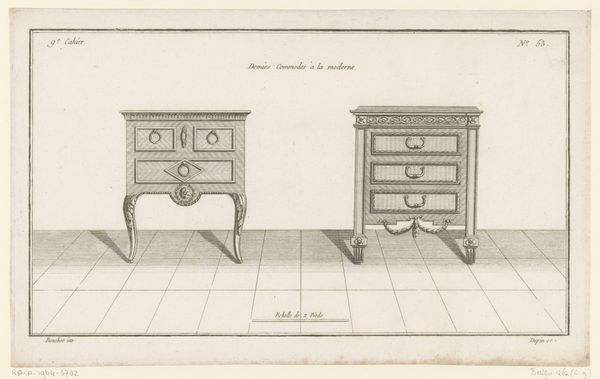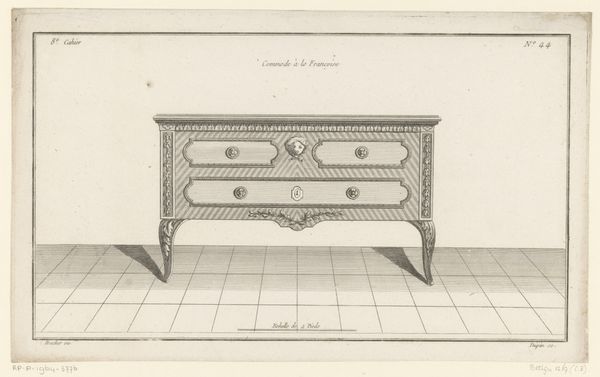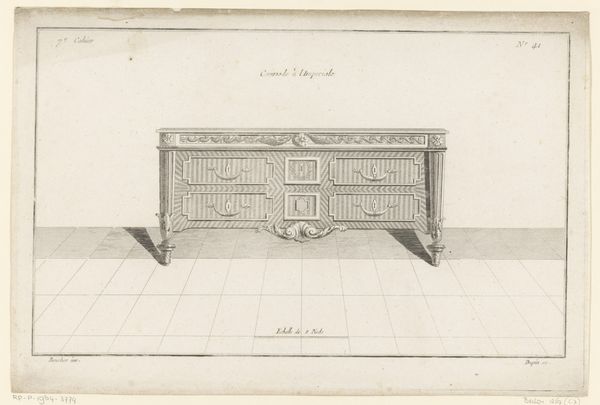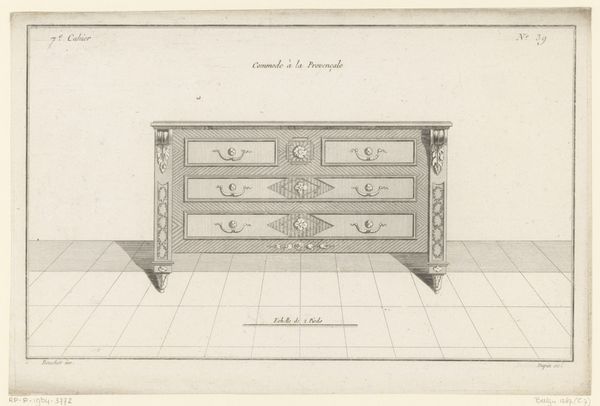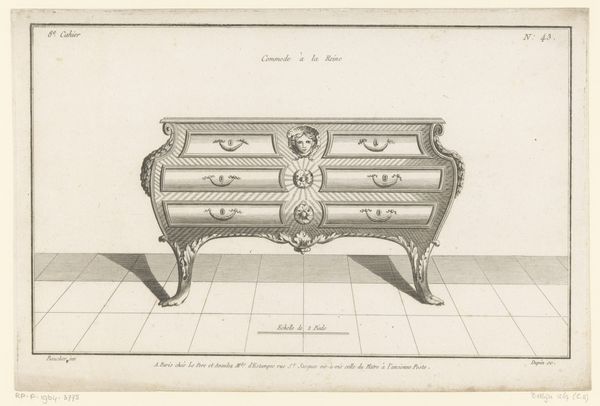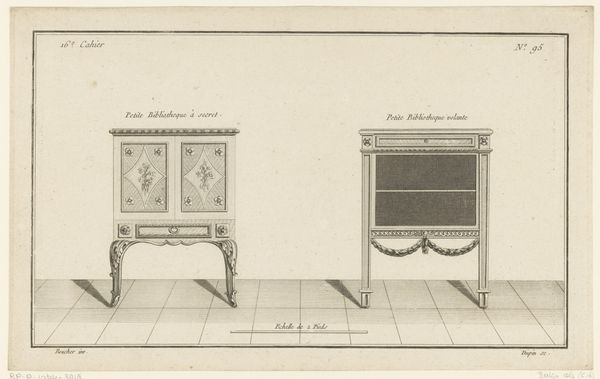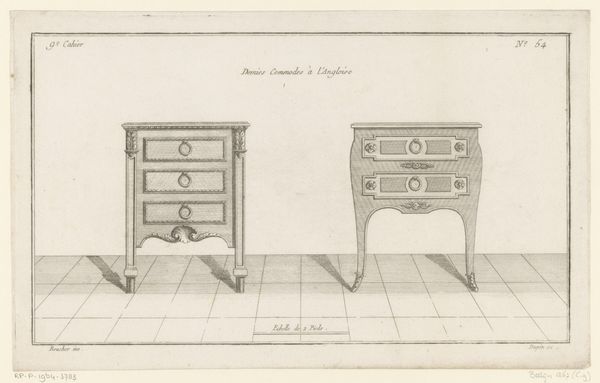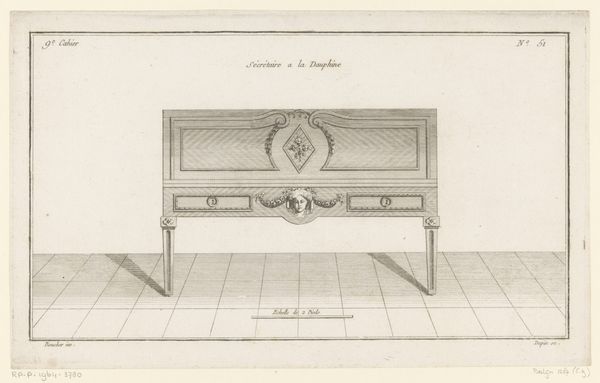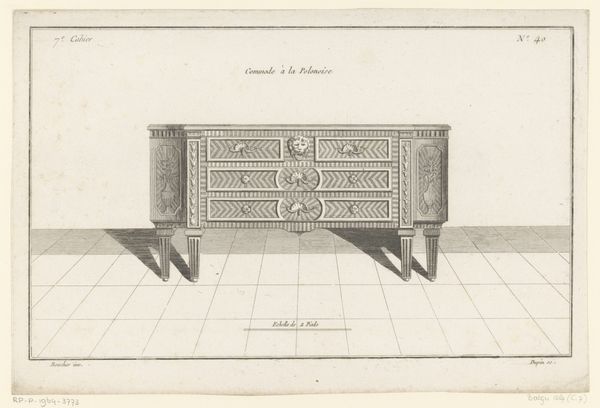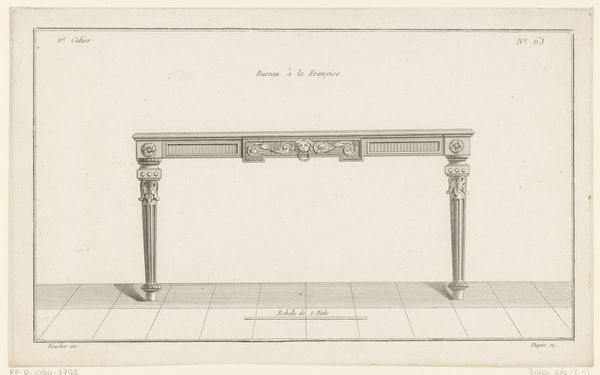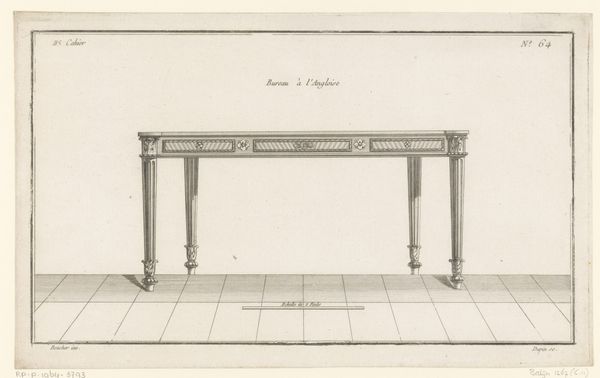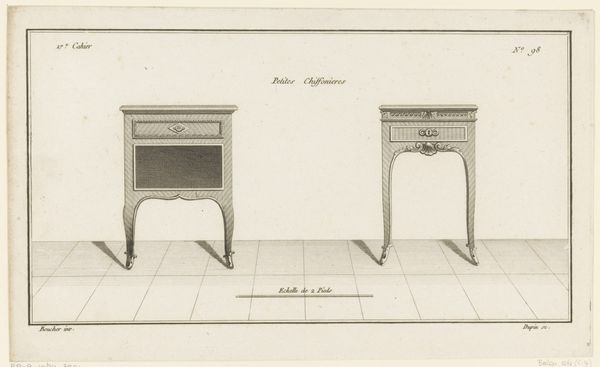
drawing, paper, ink, engraving, architecture
#
drawing
#
classical-realism
#
paper
#
ink
#
academic-art
#
decorative-art
#
engraving
#
architecture
Dimensions: height 210 mm, width 320 mm
Copyright: Rijks Museum: Open Domain
This is a design for a "Commode met bladmotieven" by Nicolas Dupin, created in the 18th century. The drawing presents a symmetrical arrangement of forms which is immediately apparent in the commode's structure. Note how the pattern of alternating dark and light lines creates an illusion of depth and texture. Dupin destabilizes the commode's surface and the surrounding space to examine the relationship between the object and its environment. The grid floor is not merely a backdrop, but an integral component that frames the commode, reinforcing the design's emphasis on order. This interplay between the commode's ornate details and the grid's rigid structure exemplifies a semiotic dialogue. Each element functions as a sign, contributing to a complex interplay between ornamentation and utility. This drawing invites us to consider how design elements reflect broader cultural values of the time. It is an exercise in how an object can be both functional and a carrier of complex cultural meaning.
Comments
No comments
Be the first to comment and join the conversation on the ultimate creative platform.
